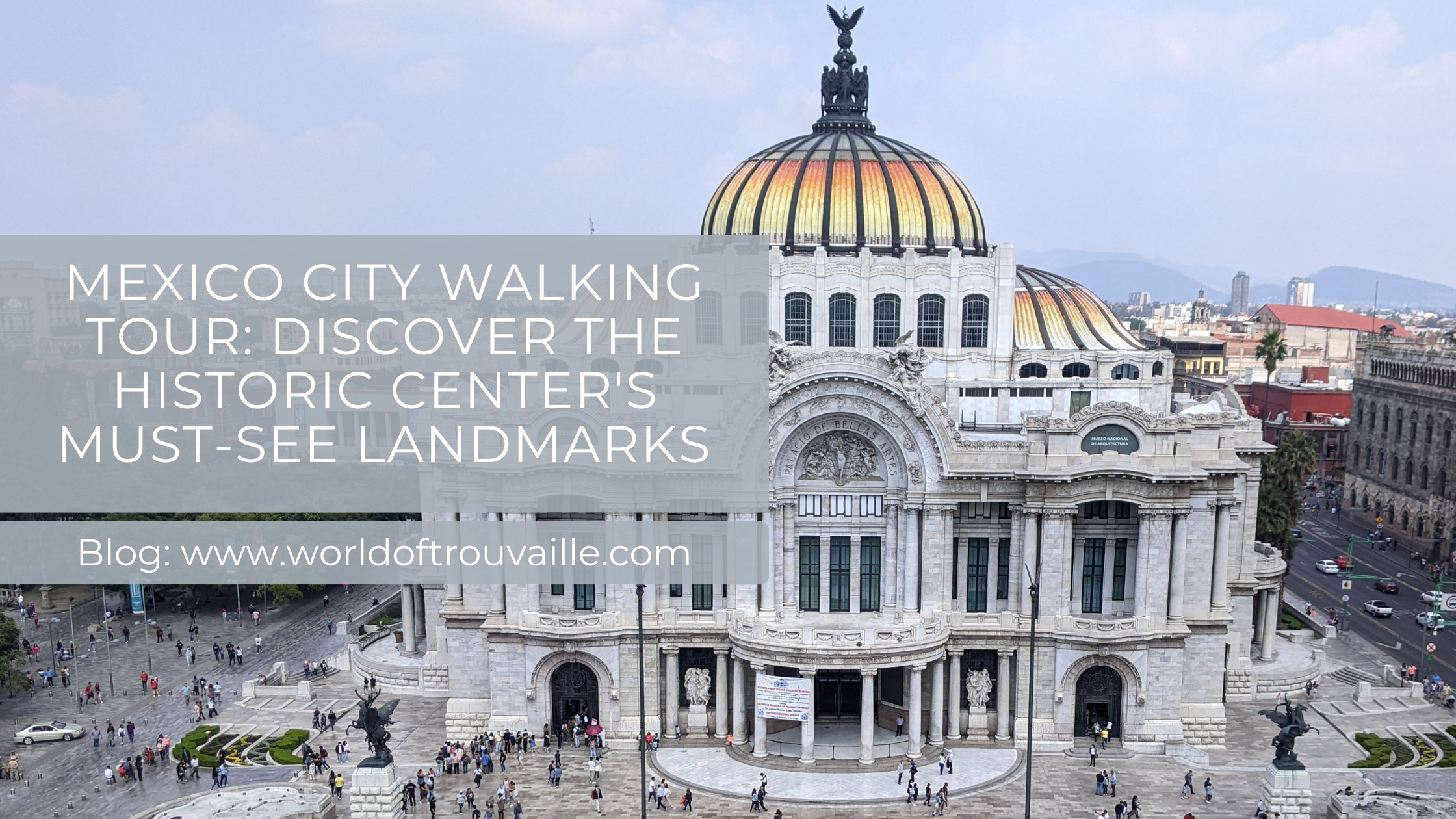
Mexico City Walking Tour: Discover the Historic Center's Must-See Landmarks
Are you planning a trip to Mexico City and want to explore its historic center on foot? Use my guideline for a DIY walking tour that covers some of the most iconic landmarks of the city. From the majestic Palacio Nacional to the vibrant Avenida Cinqo de Mayo, and from the ancient Templo Mayor to the modern Torre Latinoamericana, this tour has something for everyone. Follow along and discover the rich history and culture of Mexico City at your own pace.
Next Article: A Cultural Journey on Foot: A Self-Guided Walking Tour of Mexico City’s Must-See Sights – Day II
TABLE OF CONTENT
- Centro Histórico: Zócalo (Plaza de la Constitución)
- Palacio National
- Catedral Metropolitana de la Ciudad de México
- Templo Mayor
- Avenida Cinqo de Mayo
- Casa de los Azulejos (House of Tiles)
- Palacio de Correos de Mexico
- Palacio de Bellas Artes
- Torre Latinoamericano (LATAM) Tower
- Alameda Central
- Museo Nacional de la Revolución
- Angel of Independence
Centro Histórico: Zócalo (Plaza de la Constitución)
Start your first day with the classical cultural and historic tour through Mexico City. Grab yourself a “Torta” and a Coffee on the way and begin your day at the busy Zocalo. The Zocalo of Mexico City is one of the biggest Plazas in the world and stretches over more than 57.000 square meters. In the middle of the Zocalo the biggest Mexican flag is hoisted.
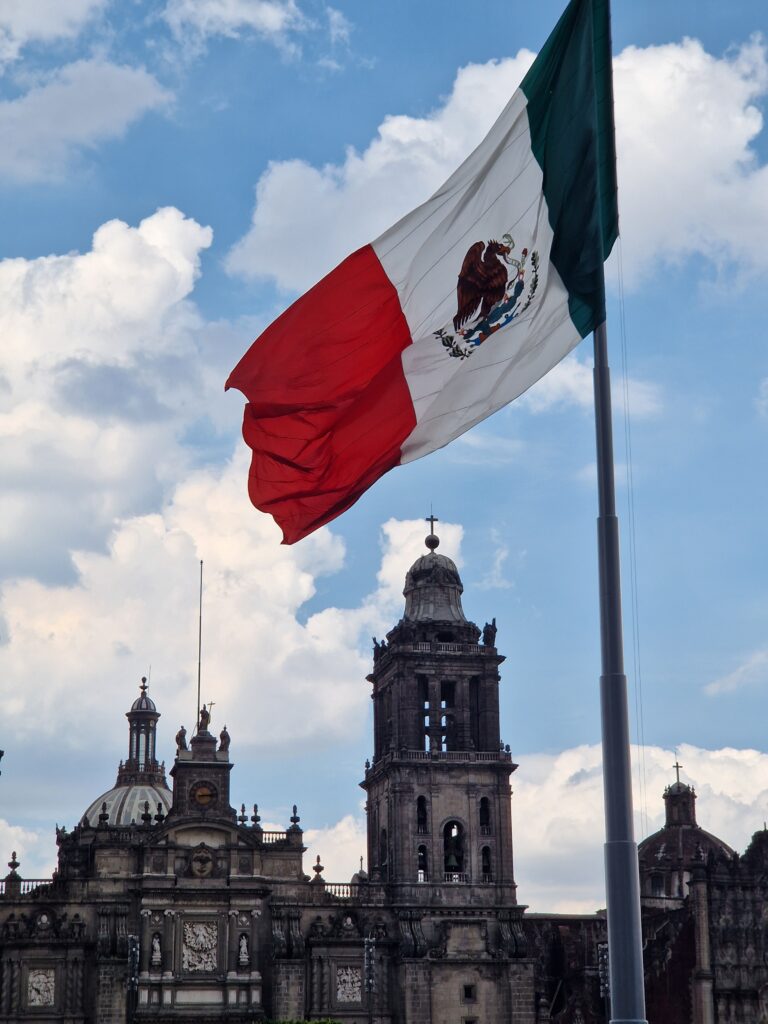
The hoisting of the flag is a popular ceremony that takes place every day at 8 a.m. The flag, also known as “Bandera,” is raised in the morning and lowered again at sunset. The Zocalo, also known as “Plaza de la Constitución,” is the birthplace of the Mexican Constitution and is used today as a gathering place for cultural events, festivities, and demonstrations. As the national holiday in September approaches, the surrounding buildings, including the Palacio Nacional, are festively decorated.
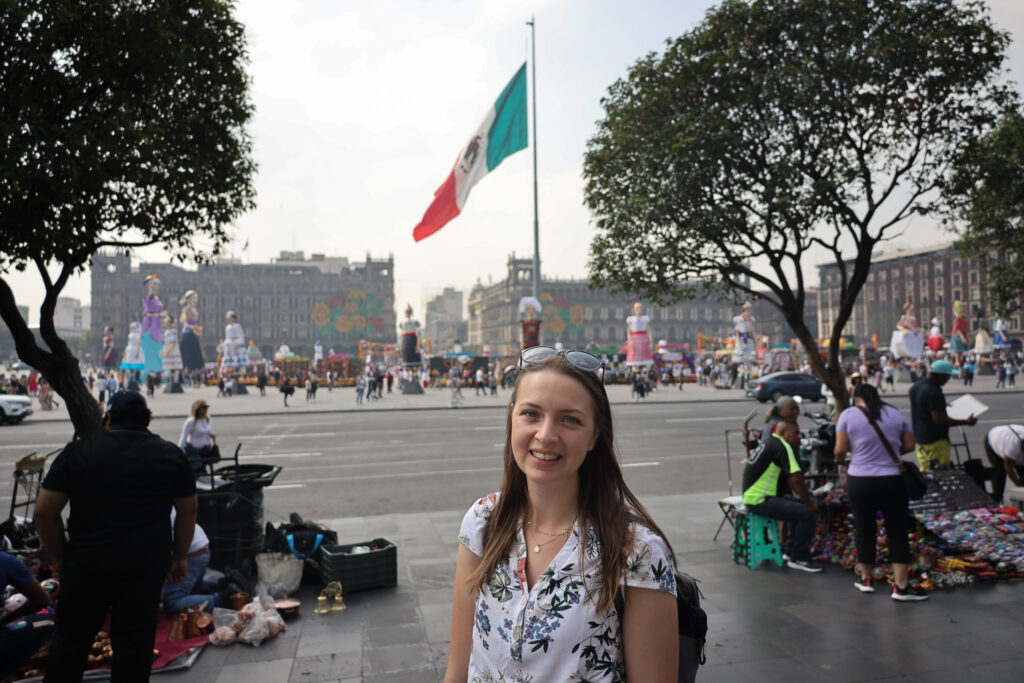
Also, during the “Día de los Muertos” in November, the Zocalo is decorated with festive elements. The decoration changes every year, but there is always a large “ofrenda” (altar) present. When we visited in 2022, there were multiple ofrendas – one from each Mexican state – all decorated with items typical of the respective region, such as flowers, food, and handicrafts. Walking through the ofrendas felt like a small “Mexico in a Nutshell” experience.
Besides the ofrenda, huge “Catrinas” were placed all over the Zocaló as well as in different other parts of the city. The Catrinas are almost as huge as the surrounding buildings. Each of them is dressed and decorated differently and worth a moment of awe.
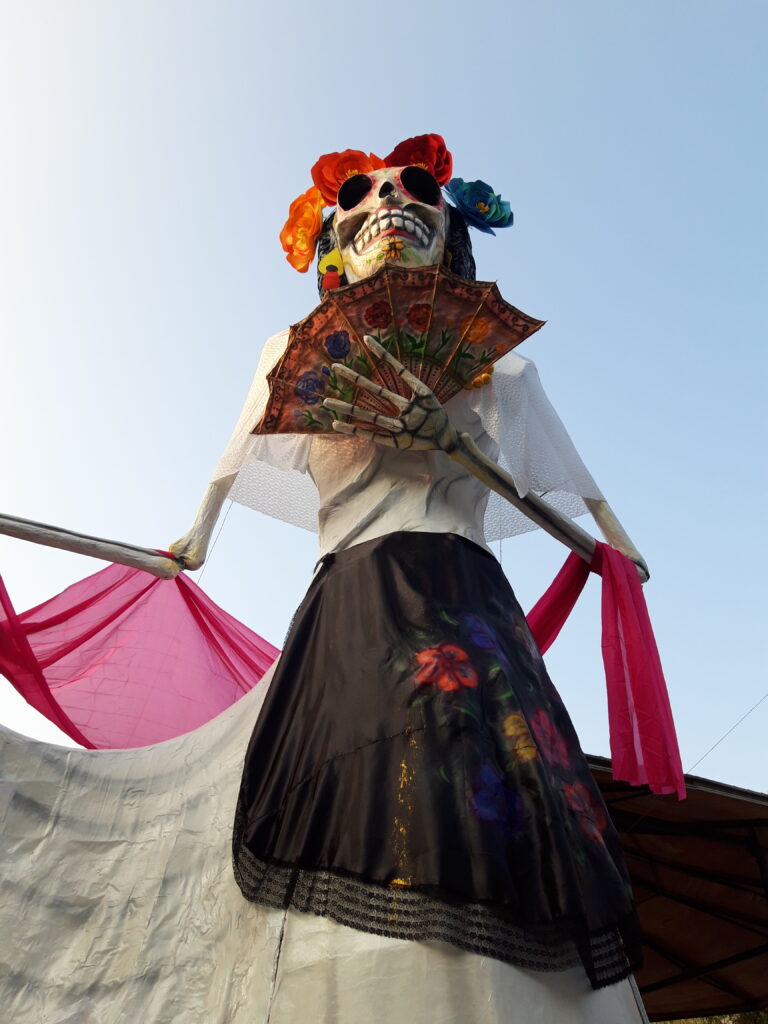
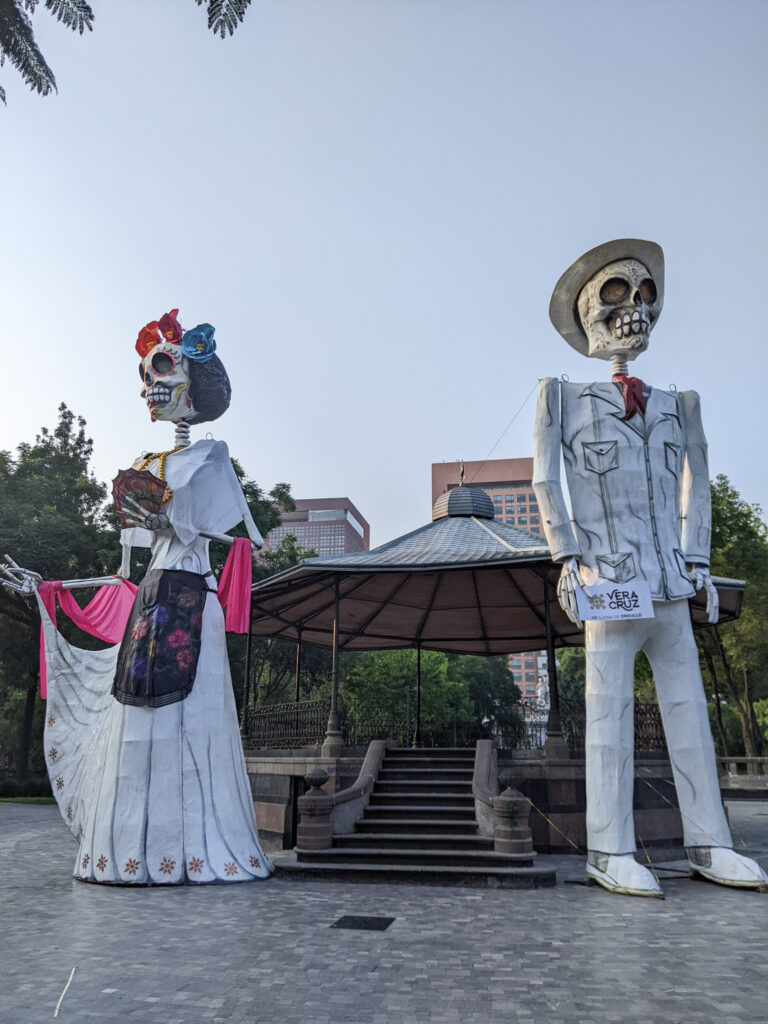
On days without any major events, there are usually markets with food stalls and crafts. The plaza is a colorful and bustling place, where there is always something new to discover.
Palacio National
The Palacio National is the residence of the Mexican government. It was built at the exact same spot where the Aztec Palace of Moctezuma II was once located. Many remains of the Aztec Palace were incorporated into today’s building, which was built during the 16th century. The Palacio National is a popular tourist destination as it houses several mural paintings by Diego Rivera – a famous Mexican painter. The murals depict scenes from Mexican history, covering a timespan from the Aztecs to the Mexican Revolution in 1910.
Admission Fee Palacio National: The entrance to the Palacio National is for free
Opening Hours Palacio National: Tuesday – Sunday: 9 a.m. – 5 p.m., Monday closed.
Catedral Metropolitana de la Ciudad de México
At the opposing site of the Zocaló a huge baroque cathedral catches the visitor’s eye. The Catedral Metropolitana de la Ciudad de México is the biggest and oldest cathedral of America. The first impression of the cathedral is undeniable impressive. Two tall towers with bell-shaped roofs frame the massive wooden and well-decorated doors, which lead you inside of the church. Do not miss to also visit the cathedral from the inside.
Entrance Fee Metropolitana de la Ciudad de México: The entrance to the Catedral is for free
Opening Hours Palacio National: Monday – Sunday: 8 a.m. – 8 p.m.
Templo Mayor
When crossing the plaza to the right of the cathedral – the Plaza Manuel Gamio – you will reach the ruins of the Templo Mayor.
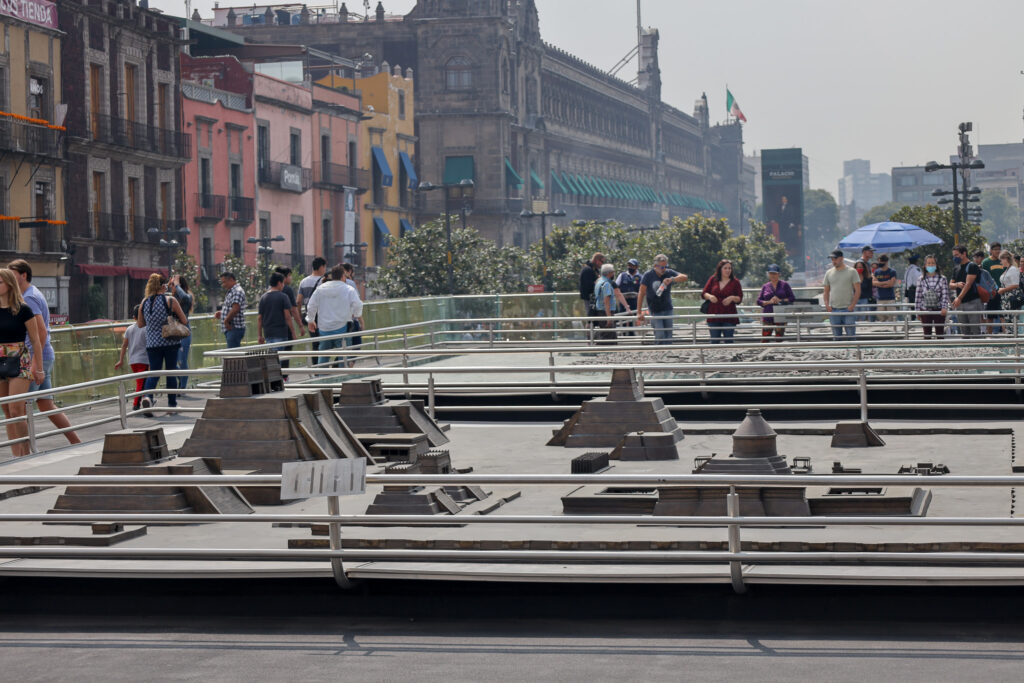
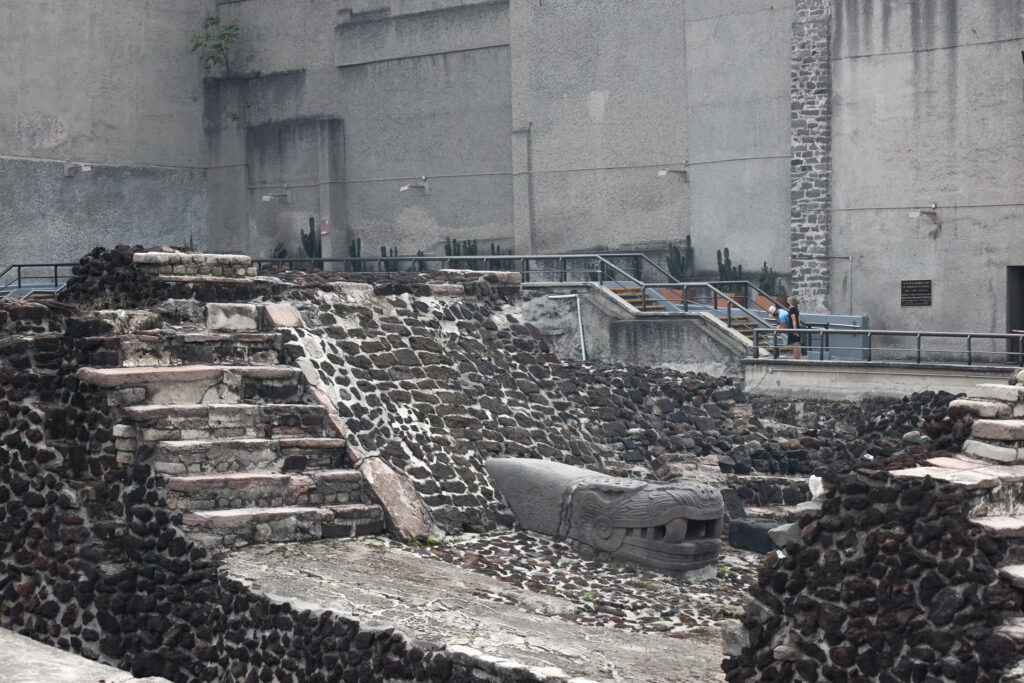
The Templo Mayor was once the center of religious and political life in the Aztec Empire. It was a massive complex consisting of two temples dedicated to the gods Huitzilopochtli and Tlaloc, the deities of war and rain, respectively.
Unfortunately, the temple was destroyed by the Spanish conquistadors in 1521, and much of its stones were used to build the nearby Cathedral and other colonial buildings. It wasn’t until 1978 that the ruins were discovered during construction work in the city center.
Today, the Templo Mayor Museum is home to an impressive collection of Aztec artifacts, including pottery, stone carvings, and sculptures. Visitors can see the remains of the temple’s platforms, walls, and altars, as well as a display of the offerings that were found during excavations. The museum also features a model of the ancient city of Tenochtitlan, which gives visitors a sense of what the city looked like before the arrival of the Spanish.
Entrance Fee Templo Mayor Musuem: 85 Persos (4€), free entrance for: children under 13, students, teachers and seniors.
Opening Hours Templo Mayor Musuem: Tuesday – Sunday: 9 a.m. – 5 p.m
Avenida Cinqo de Mayo
This street connects Plaza de la Constitución and Palacio de Bellas Artes. Walking down Avenida 5 de Mayo, visitors can enjoy a vibrant atmosphere, with a mix of modern shops and traditional stores selling handicrafts and souvenirs. Along the way, they will also encounter several street performers showcasing their talents in dance and song, adding to the lively ambiance of the street.
Casa de los Azulejos (House of Tiles)
The Casa de los Azulejos, also known as the House of Tiles, is located on the left-hand side of Condesa street. As its name suggests, the building is adorned with blue, white, and yellow tiles, which cover the facade and give it a distinctive appearance. The baroque-style palace dates back to the 18th century and is reminiscent of the colorful tiles-architecture of Portugal.
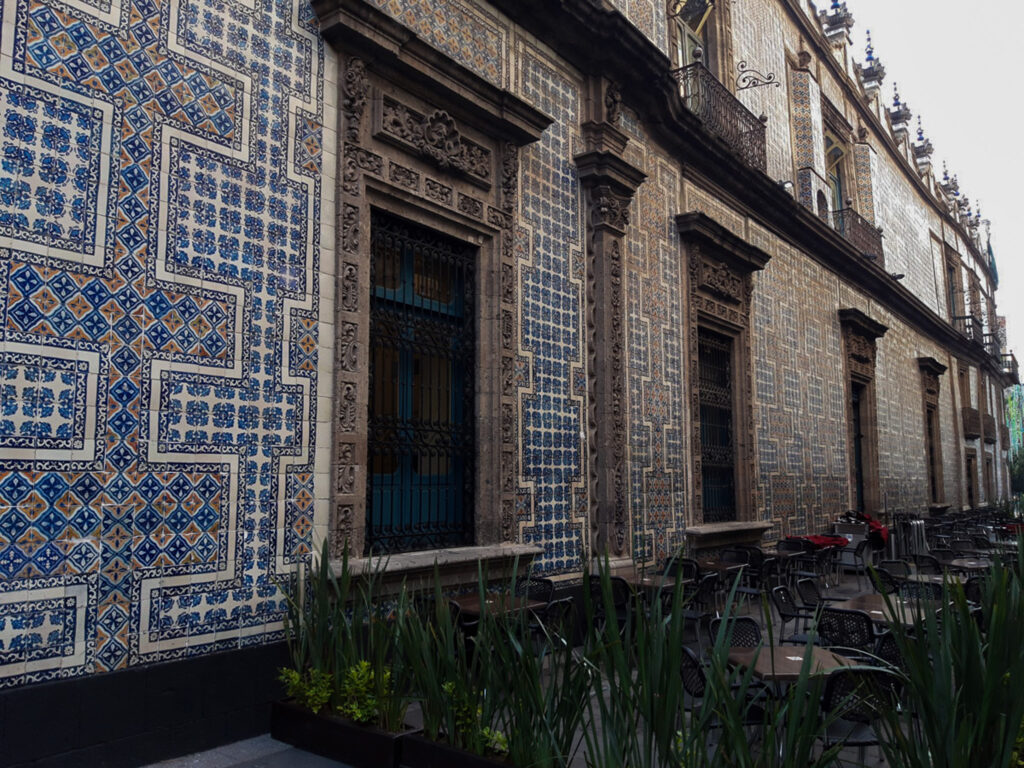
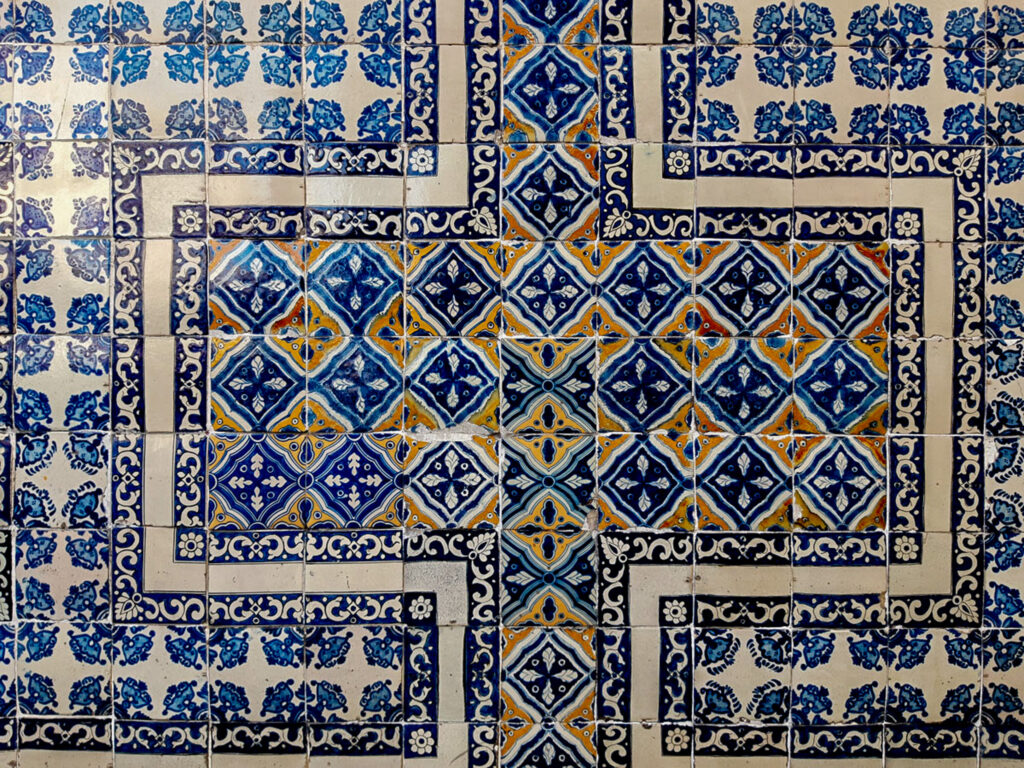
You can admire the intricate tilework and ornate balconies while enjoying a meal or a drink at the famous Sanborns restaurant that occupies the ground floor of the building.
Opening Hours Restaurant House of Tiles: Monday – Sunday: 7 a.m. – 1 a.m.
Palacio de Correos de Mexico
At the end of Avenida 5 de Mayo, take a right and walk down Eje Central Lázaro Cárdenas for a few meters until you reach the Palacio de Correos de México, also known as the Main Post Office. The building’s beautiful front and many arched windows make it easy to spot. But the real treasure lies inside, in the form of the Art Nouveau and Rococo-styled staircases.
The stair hall is located under an enormous glass dome, which floods the stairs with natural light, showing off their bright golden color. The stairs are part of the building’s steel frame and feature intricate designs that are truly breathtaking. The Palacio de Correos de México’s design is a must-see, and its staircase is undoubtedly one of the most beautiful in the world.
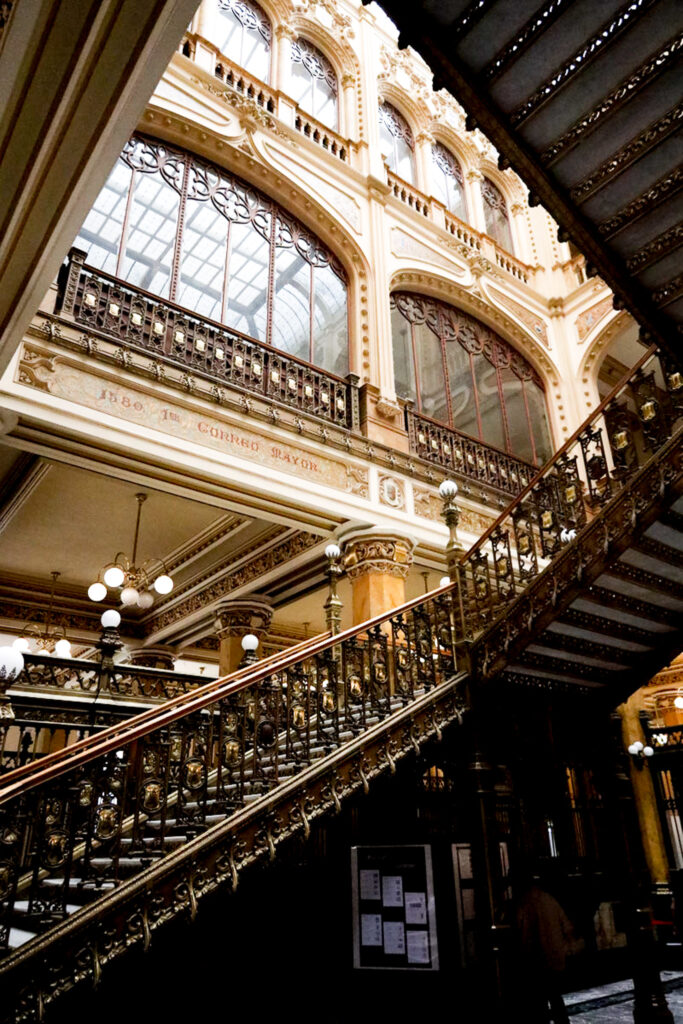
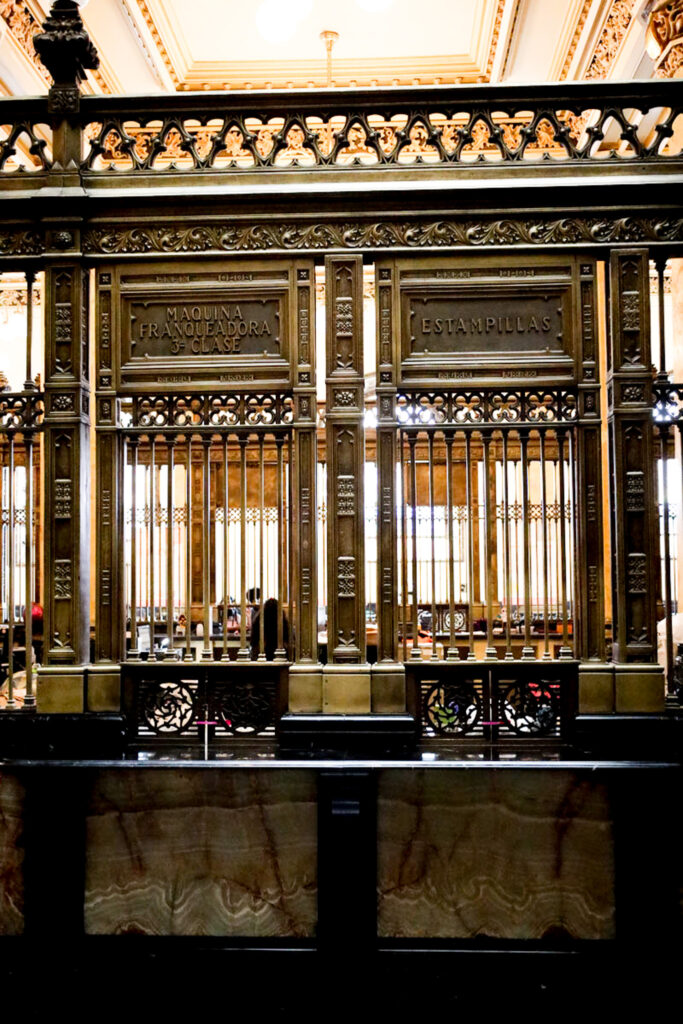
Opening Hours Palacio de Correos: Monday – Sunday: 8 a.m. – 7.30 p.m.
Palacio de Bellas Artes
Right across the street, we will find another architectural jewel:
The Palacio de Bellas Artes is a must-visit for art and culture lovers visiting Mexico City. The building itself is a stunning example of Art Décor architecture and is famous for its iconic dome roof, which has a vibrant orange and yellow color that creates a spectacular sunrise-like effect. In 1987, the Palacio was declared a monument of art by UNESCO, solidifying its place as an important cultural gem.
The Palacio de Bellas Artes hosts a variety of cultural events, including theater, ballet, and opera. However, visitors can also enjoy the beauty of the building from the outside. For the best views, head to the rooftop bar “Cafetería terraza Sears Centro Histórico,” which is located across from the main entrance of the Palacio at the “Sears” shopping mall. Although it may be a bit pricey, a short break here is worth the price and the view. Take in the sights of the Palacio and the surrounding historic city before continuing your walk.
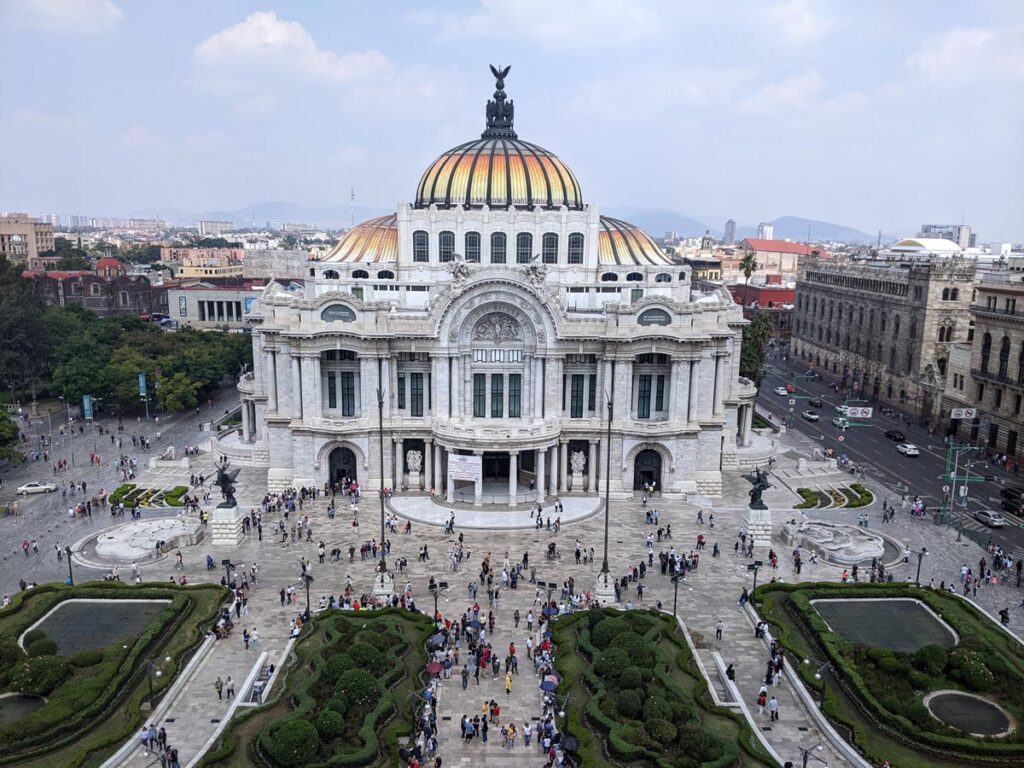
Entrance Fee Palacio de Bellas Artes: 80 Pesos (4€), free entrance for: children under 13, students, teachers and seniors. On Sundays the visit is free for all visitors.
Opening hours Palacio de Bellas Artes: Tuesday – Sundays, 11 a.m. – 5 p.m.. Mondays closed.
Torre Latinoamericano (LATAM) Tower
For another spectacular view of the Palacio de Bellas Artes: visit the Torre Latinoamericano (LATAM) Tower. When the tower was built in 1956, it was not only the first skyscraper in Latin America but also the tallest building (181.33 meters) in Mexico City. The tower survived both heavy earthquakes in 1957 and 1985 undamaged.
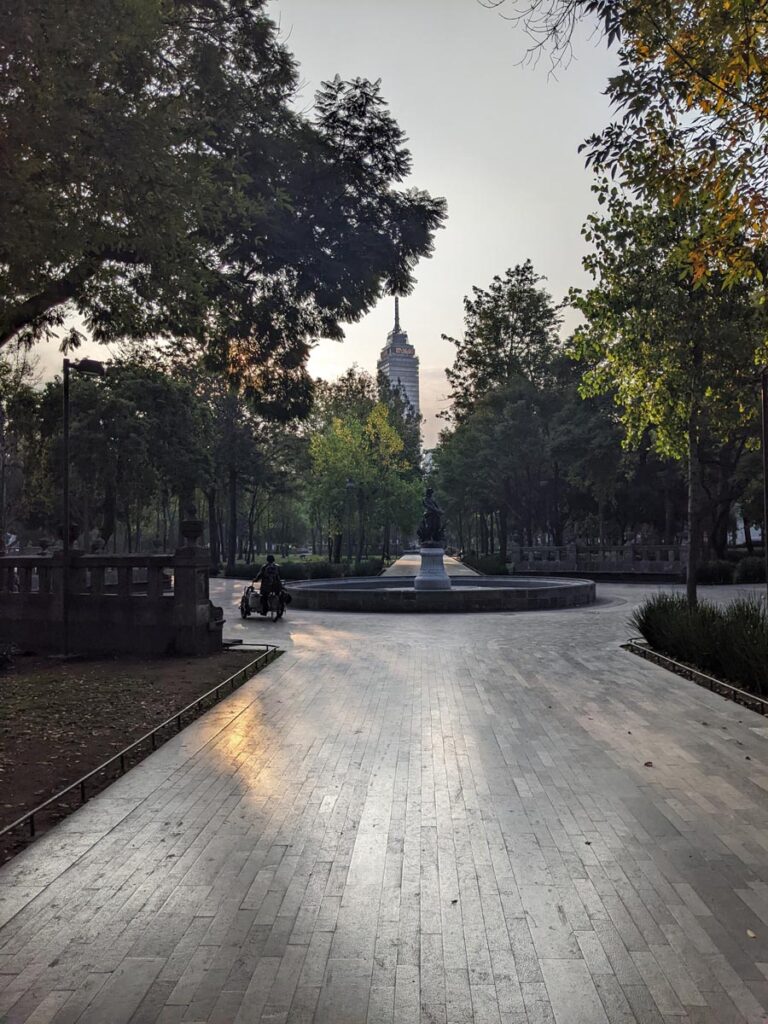
The tower not only offers a great viewing platform on the 44th floor, but also features an informative small museum providing insights into the history of the building and the development of Mexico City.
The 360° viewing deck on the 44th floor offers breathtaking views of Mexico City in all directions. To the north, you can spot the colorful roof of the Palacio de Bellas Artes at its feet, alongside the Alameda Central, a green central park that stretches all the way down to the Avenida Reforma. To the east, you can see the Zocalò with its huge flag, the cathedral, and the Palacio Nacional.
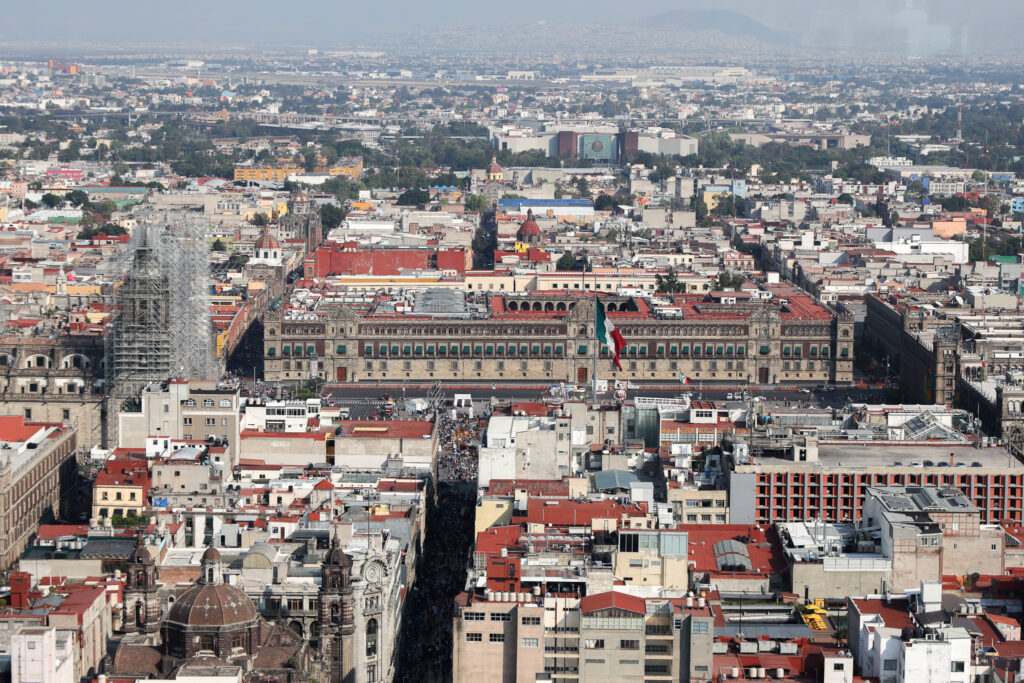
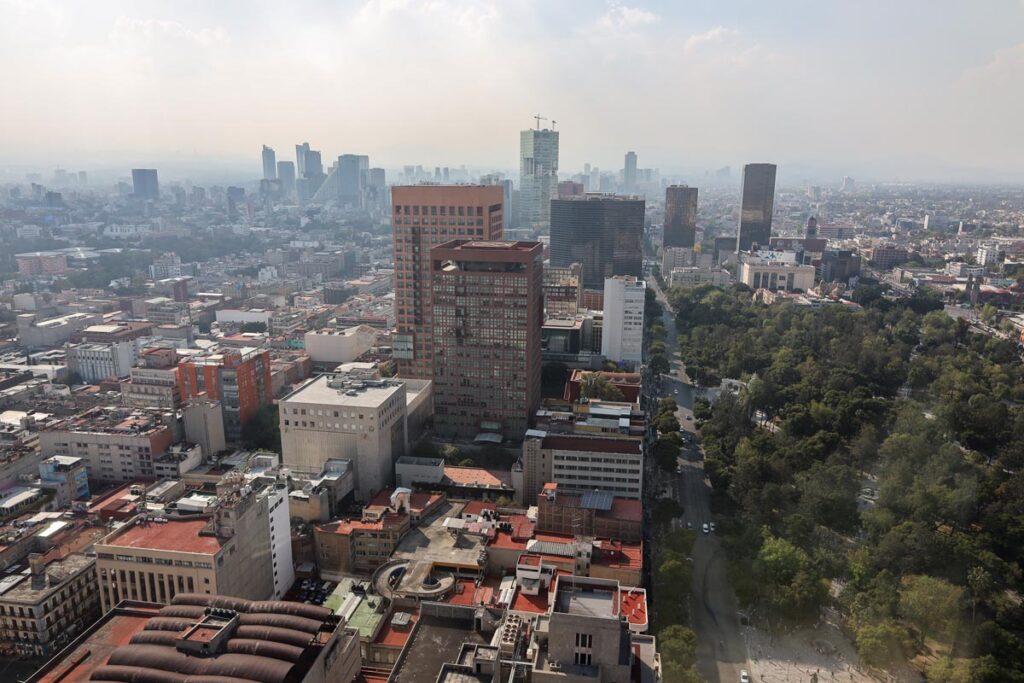
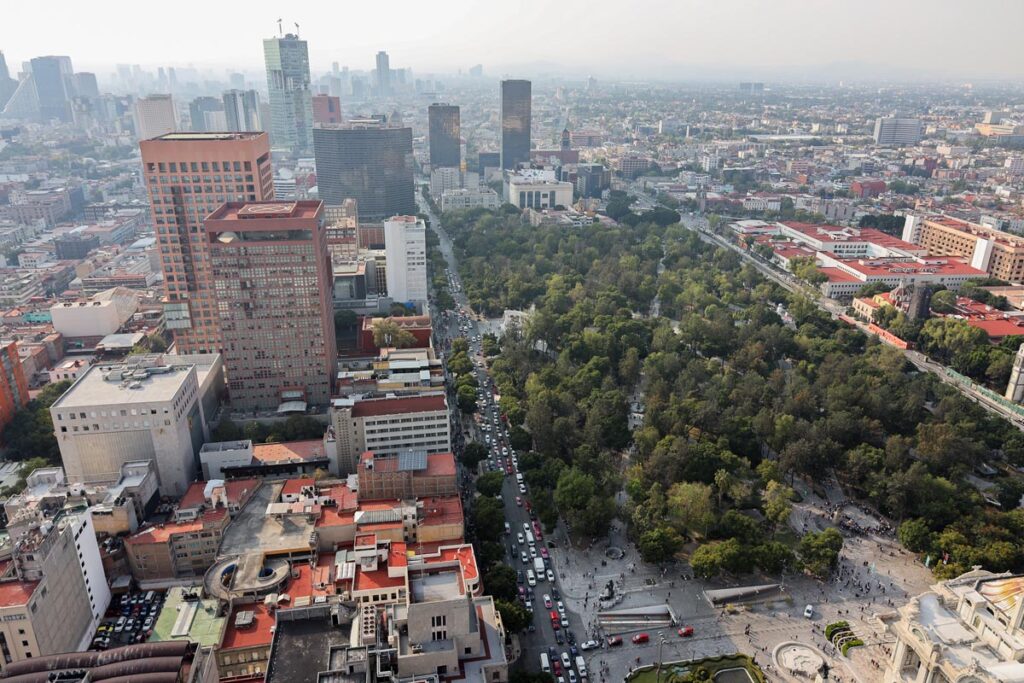
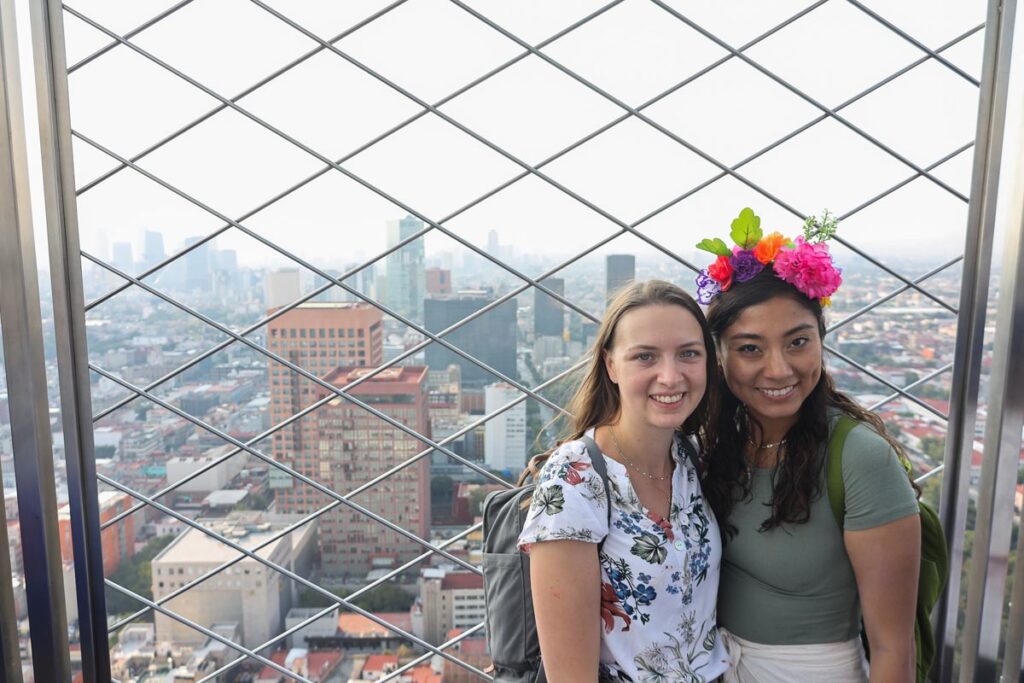
The viewing platform offers a sense of the sheer size of the city, which stretches all the way to the mountains in the north and fades into the horizon and smog in the south. Towards the southwest, you may notice another cluster of skyscrapers – Santa Fé. Following Avenida Reforma all the way south will take you to Santa Fé, the new business hub of Mexico City. Here, you can find the offices of numerous international companies and the Mexican World Trade Center.
Admission Fee Torre Latinoamericana:
170 Pesos (8€). Please note that these prices are subject to change, and it’s best to check the official website or contact the attraction directly for the most up-to-date information.
Opening hours Torre Latinoamericana:
Monday to Sunday, from 9:00 am to 10:00 pm.
Alameda Central
Next to the Palacio de Bellas Artes, you will find a large stretch of green – the Alameda Central. You can continue your walk along this small green oasis in the middle of the concrete jungle. Within the park, you can find numerous fountains and sculptures.
Cross the green park and approach a huge intersection, where the Avenida Paseo de la Reforma and the Avenida Juárez meet. Cross the intersection in a northern direction and continue on the Avenida de la República. This street leads to a plaza, and you will directly recognize our next stop – the Museo Nacional de la Revolución. The Arc-de-Triomphe-like building is situated in the middle of the Plaza de la República.
Museo Nacional de la Revolución
Although the Arc de Triomphe in Paris may be the most well-known triumph monument, the Monumento a la Revolución is the tallest, reaching a height of 65 meters. For comparison, the Arc de Triomphe de l’Étoile in Paris is only about 50 meters high.
The building houses a museum and offers a great observation deck at the top. One highlight is the glass elevator, which takes visitors to the dome and the viewing platform.
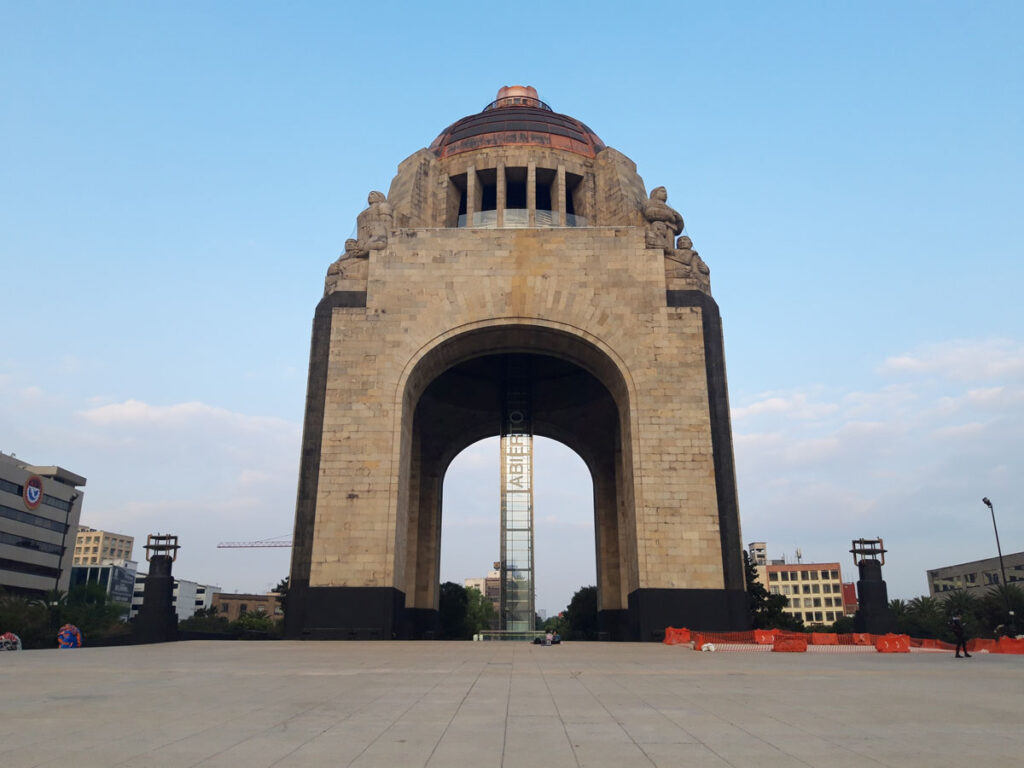
Admission Fee Monument:
70 Pesos (3,5€), free entrance for: children under 13, students, teachers and seniors.
Opening Hours Monument:
Monday – Friday: 12 p.m. – 8 p.m., Friday + Saturday: 12 p.m. – 9 p.m., Sunday: 11 a.m. – 8 p.m.
Admission Fee Museum:
34 Pesos (1,60€), ), free entrance for: children under 13, students, teachers and seniors.
Opening Hours Museum:
Tuesday – Friday: 9 a.m. – 3 p.m., Saturday + Sunday: 9 a.m. – 7 p.m., Monday closed.
The Plaza de la República is a great spot for a short break. You can find food stalls and a small green garden area where you can enjoy your snack or rest.
From here, you will continue your walk by heading back to the Paseo de la Reforma and walking in the western direction towards the Angel of Independence. You will come across another small park on your right, which is the Plaza Luis Pasteur, featuring a huge fountain in the middle. Here, you will cross the street to the middle of the tracks. In the middle of the Paseo de la Reforma, you will find the Monument A Cuitlahuac, which displays the Aztec ruler Cuitlahuac.
Angel of Independence
The walk continues on the other side of the street, under the shade of the trees. Finally, at the second roundabout, you arrive at the Angel of Independence. Crossing this huge roundabout can be a bit tricky, so it’s best to just run if you want to reach the platform of the monument.
The Angel of Independence was built to commemorate the Mexican Independence and later served as a mausoleum for the heroes of the Mexican War of Independence. Nowadays, the monument is a gathering place for both celebrations and protests.

We end our day at one of the many restaurants close by, let our feet rest and process all the impressions of this first day.
Next Article: A Cultural Journey on Foot: A Self-Guided Walking Tour of Mexico City’s Must-See Sights – Day II

